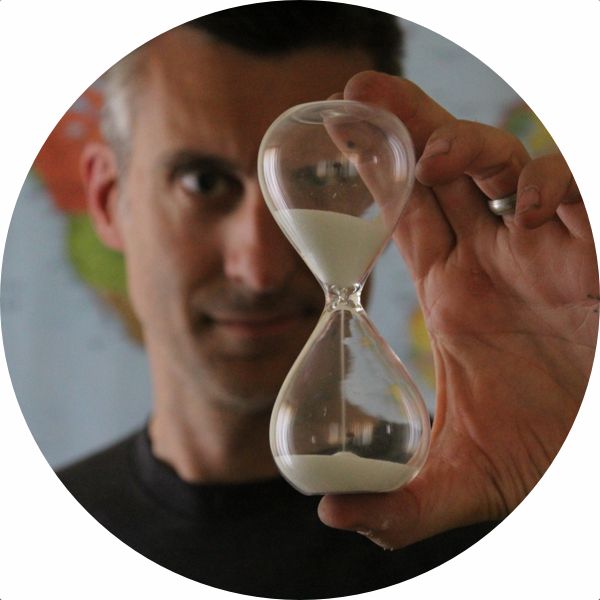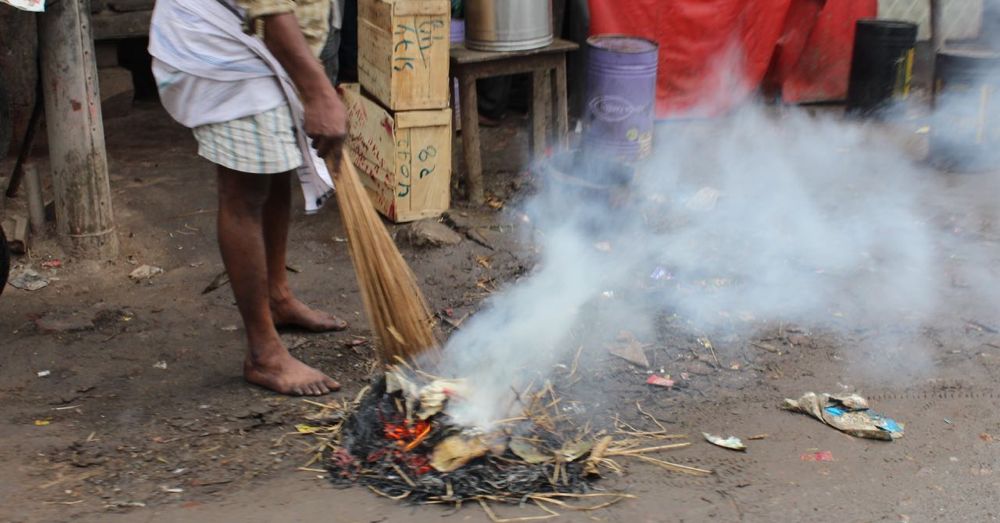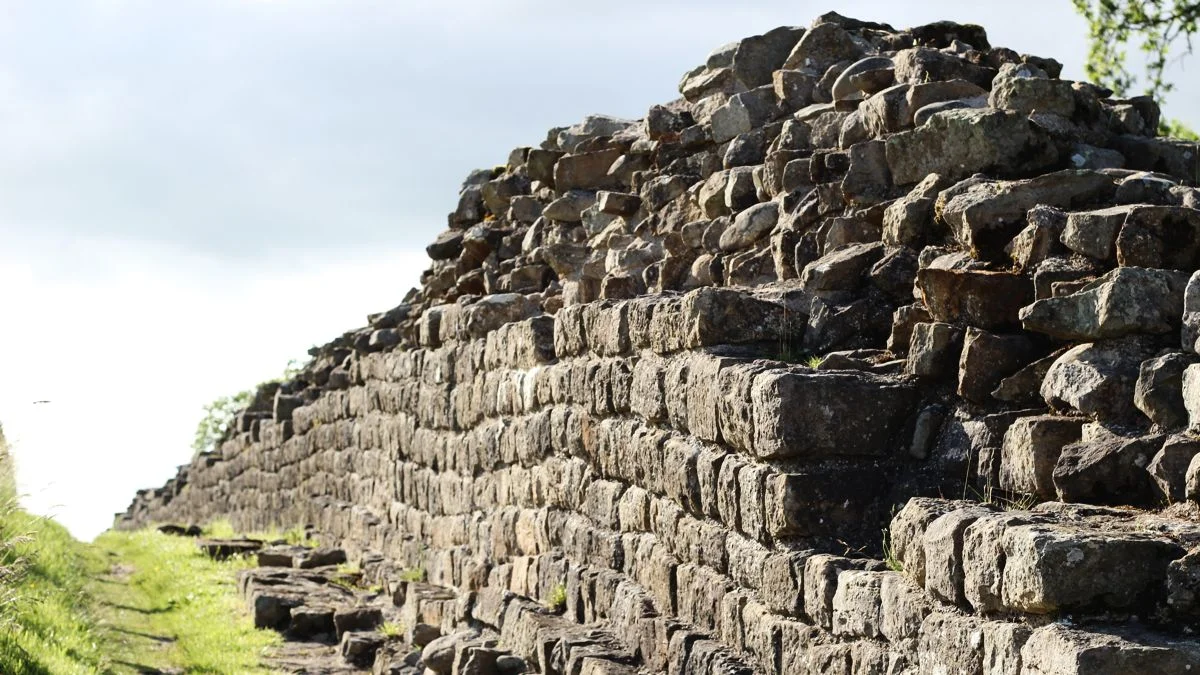Sunday, 01-03-2015. Day 193.
Ghost Cities, Deep Wells, Sales Opportunities.
During the night, the rains came. So far, we'd been fairly lucky with the weather. The last time we'd experienced rain was in Vietnam, and that was only a few light showers. And this time, we had the fortune of traveling by car, so we'd stay dry on what was going to be a 10-hour day before we'd arrive in Jaipur (we had two stops on the way).
After we packed up and got under way, we took a shortcut through old Agra, a decision that was only possible because it was a Sunday. On any other day, the narrow shop-lined streets would have been packed with people.
After about an hour or so in the car, we pulled up to a place called Guslistan, the jumping off point for visiting Fatehpur Sikri, and into a parking lot filled with tourist cars. Most of the tourist cars we saw in India were white, said "Tourist" on them somewhere, and had yellow (commercial) license plates. This made them easy targets for the street urchins who would wander from car to car asking for money.
We got out of the van and met our guide, who was some kind of hipster Indian guide with a fedora and snazzy Nehru jacket. He told us how much we'd have to spend to visit Fatehpur Skiri (which was a huge complex on top of a hill) including the bus rides up and back, admission, and shoe guardian bribe fee. I appreciated getting all this information up front and handed him a stack of rupees so he could manage the cash transactions. Then it was onto a bus and up to the site.
Fatehpur Sikri
City of Victory, City of Ghosts.
Fatehpur Skiri (a UNESCO World Heritage site) which means City of Victory, is also called the City of Ghosts. It was founded by Akbar the Great (reminder: The third Mughal Emperor) as his new capital. But he only lived here for four years. According to our guide, he'd founded it during a period of high rain, but that was quite unusual—the region is normally quite arid. So when the water dried up after a few years, Akbar pulled up the stakes and moved the capital back to Agra.
Akbar was an interesting fellow. He is considered by some to be a secular ruler—or at least one that was very tolerant of all religions.He had a Hindu wife, a Muslim wife, and a Christian wife (and many more), so the architecture of the castle combines elements of the different faiths.
That's about all we learned about the site. Our guide was put out when we asked questions and seemed more interested in taking pictures of us with our cameras. So after he felt satisfied with his photos, we walked up to the Emperor's Courtyard, past the most aggressive group of entrepreneurial-minded street kids we'd encounter in India.
To enter the Emperor's Courtyard, which holds an active mosque, we had to take our shoes off and leave them with the shoe guardian. No white booties or temple shoes this time, but after the rains, the place was quite wet and, like nearly any place we visited in India, full of pigeons. Of course this meant the ground had a lot of pigeon leavings as well.
Our guide was really light on the details about the courtyard. On the southern wall there's a towering gate known as the Victory Gate, and opposite this is the white marble tomb of Sufi holy man Salim Chishti.
One of the reasons Akbar moved the Mughal capital here was to honor Salim Chishti. In addition to helping Akbar in certain battles, Salim Chishti blessed Akbar, after which his wives started popping out sons.
On the eastern wall there is a moderate-sized jama masjid (which means congregational mosque), which was built about five years before the Victory Gate and features some nice stonework. After we walked through the mosque and our guide tried his hand at some more trick photography, he asked us if we wanted to see a demonstration of how they cut the stone. We were hip to this trick by now, so we said politely declined. But don't worry, our guide took us there anyway.
Sales Opportunity Number Three: Carved Stone
We stopped at a small vendor next to the mosque who immediately launched into his sales pitch for carved stone elephants. Some of his work even had an elephant inside an elephant. It was nice enough stuff, but we weren't in the market for stone elephants, so, after a significant amount of resisting, we moved on.
After avoiding buying any carved stone elephants, we stepped outside the Victory Gate to take a look at the area around the castle. Fatehpur Sikri is on top of a hill, and offered a great view of the city below and the remains of the wall that still surrounds it.
One of the coolest things we saw here were the hives of rafter bees hanging from the arch of the gate and the mosque. It was cold, though, so there weren't many bees at all on the hives (but there were a few dead ones on the ground).
Eventually, we got back to the entrance and retrieved our footwear from the ever-vigilant shoe guardian and fought our way through the crowds and persistent sales boys to get back to the bus, which we rode down to the parking lot we'd started at.
The place was much busier here than when we'd first gone up, with a lot more vendors and even a gentleman doing the snake charmer thing. The prospect of a long day in the car was daunting, and we didn't spend too much longer here. So we said goodbye to our guide, tipped him, and by 11:45 a.m. we were back on the road to Jaipur.
Brick Furnaces
All along the road from Agra to Jaipur, the fields were dotted with tall chimneys belching out smoke. Turns out these are furnaces for drying handmade clay bricks, fueled by mustard grass. There was one place we drove by that had row after row, stack after stack, of bricks ready to be fired. We also saw numerous trucks, wagons, and camel carts pulling loads of bricks from one place to another. Bricks are big business in India.
We stopped for lunch at 1:00 at another midway restaurant. This one didn't look too bad and we were hungry, so we had a meal here before continuing our way through Rajasthan and it's endless potato fields until we came to our next destination, the Chand Baori Stepwell.
Chand Baori
There are something like 230 stepwells in the region, but the grandest (so they say) is the one at Chand Baori. It was built sometime between the years 800 and 900, some 700 years before the time of the first Mughal Emperor in India. The steps were really impressive and one of my favorite sights in India.
We met our guide, a Mr. Sukdev, outside and he took us inside and showed us the small, but impressive monument. It has 3500 steps over 13 levels, with each level measuring 1.5 meters tall. Historically, during heat waves, the surrounding villagers would come and gather on the steps to cool off—temperatures near the bottom of the well were quite cooler than at the top. Our guide told us that during a local festival, people will swim in the water of the well.
As we were leaving the site, an old Indian woman approached us and held out a guestbook and a pen. I signed it and handed the pen back to her. She stuck out her hand and asked, "What about my tip?" Of course. I gave her a 10.
Once outside, our guide took us through what he said was a real Indian village. I suspect that this wasn't an actual Indian village but an approximation set up for tourists. We got a demonstration of pottery-making (for a tip) and then we were shown some traditional weaving techniques.
Sales Opportunity Number Four: Woven Mats
As soon as we walked into the small house in the village, we knew what was coming. Outside a small room, there was a loom set up with a partially woven rug. We were led inside, where a man stood and a woman squatted in front of a smaller loom, also holding an in-progress piece of weaving. It's notable that as the man described the weaving process, the woman didn't do any actual weaving. The man and our guide tried hard to sell us on a $20 mat, which was a good deal and but we didn't need any mats right then, so we declined. I suspect the mats weren't actually made in that small room.
On the way back to our car we were asked if we wanted to see a woman's home. We agreed, so we followed her around the corner into a small room that looked like a kitchen. She picked up a tin off the stove (there was no fire) and posed, saying, "Photo?" So I took a photo.
As soon as I snapped the shot, she put the tin down and held out her hand. "Rupees?" she asked. I shrugged and gave her my last 20, then turned to go. Before we were even out of the small kitchen, a young girl ran up to us saying, "Hello, rupees?" I had nothing. I'd given all my rupees away.
Jaipur, At Last
We arrived in Jaipur in the early evening and checked into our hotel, which was right across the street from the Jah Mahal—a castle in the middle of Man Sagar Lake. After we got settled, Rakesh took us to a tailor (the girls had expressed some interest in such a visit). First we got a demonstration of traditional block printing and then we went into the store and
I'm not going to count this one as a sales opportunity, because we asked to go here, but the effect was pretty much the same as the other shops we'd been taken to. Just know that if you're going to buy anything in India, be prepared for the process to take some time, be prepared to negotiate (the price of everything in India is open to negotiation), and be prepared to be followed all around the shop. I was sort of interested in the dress shirts, they made, but I couldn't browse the selection without someone trying to push the sale, so it drove me away.
In the end, Jackie and Samantha got custom-made shirts (which during negotiation were going to be delivered to our hotel that night, but after we paid, delivery turned into the next night) and Frankie got a scarf.
After that was over (again, it took a long time), we ate dinner at the most lackluster restaurant we visited in India. And this place had live music and dancing, which was a little more than we were looking for. It had been a long day (more than 12 hours since we'd left Agra) and we were tired, so we just wanted a quick, quiet meal.
Notable Statistics:
- UNESCO World Heritage sites visited: 1 (22 cumulative)
- Pigs seen: 14
- Hours in a car: 5
- Dogs eating dead cows: 2
- Dead dogs: 2
- Puppies: 2

Tom Fassbender is a writer of things with a strong adventurous streak. He also drinks coffee.




























